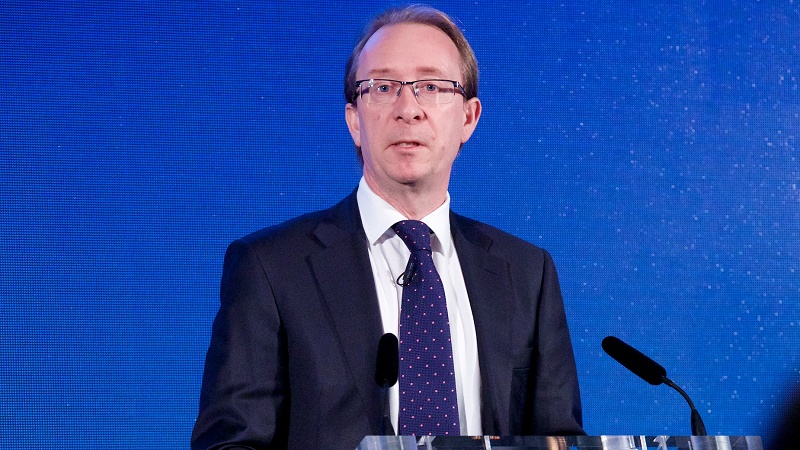Investors needed to rethink safe havens, according to the most recent JP Morgan Asset Management Long Term Capital Markets Assumptions report. With negative yields on around 25% of government bonds, the trade-off for the ‘insurance’ provided by fixed income looks increasingly costly. Do fixed income managers agree that the future is, if not bleak, then at least challenging?
Certainly, many agree that there is little value in certain parts of the fixed income market. Speaking at the recent Square Mile Investment Conference, Richard Woolnough (pictured), manager of the M&G Optimal Income Fund, said: “I don’t think you can generate negative interest rates. And if you can’t generate negative interest rates permanently, then the risk/reward is skewed.
“If the upside is limited – because rates can’t go to minus 2-3%, it’s very hard to be bullish. As a result, we remain very bearish about interest rates.”
Bond bull market is far from over
But Ariel Bezalel, manager of the Jupiter Strategic Bond fund, has a different view and believes there is still value if you know where to look. “The government bond bull market is far from over. US Treasury yields fall sharply over the course of rate cutting cycles, and we think rates have much more room to drop, which is why we continue to be bullish.
“At this late stage in the cycle, with the powerful deflationary forces of ageing demographics and too much debt, I believe the path of least resistance is for developed market interest rates to continue to drift lower. Ultimately, I think US Treasury yields are likely to trend towards the yields seen in Japan and Europe, which of course would result in compelling returns for investors.”
Bezalel believes the Federal Reserve has little ammunition left to stimulate the economy with rates still at historic lows. He expects to see more aggressive policy easing than is currently priced in by markets if the macroeconomic climate sours from here. “It looks like monetary policy is all tapped out, which is why we’re hearing increasing debate about more radical policies that could be employed to fight the next downturn such as modern monetary theory, debt write-offs and ‘QE for the people’,” he says.
While there is clearly a lot of pressure for policymakers to now turn to fiscal policy to reflate the economy – a risk for ‘safe haven’ assets – he believes meaningful fiscal policy is only likely following a recession, not before. There are significant political hurdles to jump before any substantial policy can be enacted.
Investors will have to take risks
Woolnough believes there are reasons to look harder at other parts of the fixed income market. There are structural shifts driving greater choice for fixed income investors and investors can look beyond government bonds for diversification and yield. He says: “When I started in 1985, there were no European corporate bonds… the market now is more sophisticated and I think this will continue.
“The banking system continues to shrink: the bank system was a way of recycling capital. You put your money into a bank. The bank promises a positive return. The bank has no risk and they make money by lending money. That model is dying. The model going forward will be that you’re going to have to take risks, whether that’s duration or credit risk.” He believes companies will increasingly borrow by issuing debt, which will create more opportunities for fund managers.
Japanification looms large
At the same time, the deflationary forces that have powerfully supported the bond market are likely to endure. Technology is unlikely to decrease in influence. Demographic weakness and ageing populations have been a phenomenon in developed markets, but may also start to become a phenomenon in emerging markets. China’s demographics, for example, don’t look great.
These deflationary forces are acting over time to frustrate growth. In this scenario, monetary stimulus is likely to provide only a temporary uplift before these deflationary forces weigh down on economic activity once again. The worry, for Woolnough, is Japanification. “Japan, I believe, is a kind of laboratory. Japan has done zero rates, QE, fiscal policy and yet rates are still pinned down at such low levels.” Financial repression is likely to see interest rates low for years to come. This will support the bond market at current levels.
That said, it doesn’t necessarily make it a good investment and, as JPMAM has said, it means investors need to rethink late cycle investing. It says: “Casting the net more widely, forecast returns from global real assets and infrastructure have held up remarkably well, and given the resilience of their cash flows they may even act as a proxy for duration in portfolios with limited short-run liquidity demands.”
Fixed income is a vast and diversified asset class with a variety of options for investors. However, the role of low or negative yielding government bonds needs to be re-examined in the current environment. Investors may need to seek out other assets that can fulfil their place in a portfolio.









